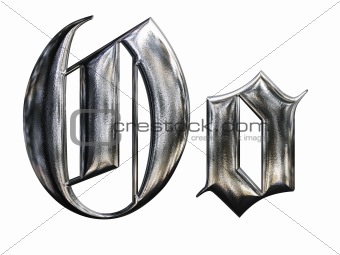The hiatus is still in effect, but I've gotten quite a lot done in the past few days and was in the mood to write, so have an unexpected post.
Another talk I went to at KWHSS was on the Heraldic Regions of Europe. If your persona is not Anglo-Norman and you would like your armory to reflect that, there are certain cultural nuances you should learn about and take into consideration.
Heraldic armory, in the sense that typically comes to mind, started in Western Europe and spread eastward (Other types originated elsewhere [such as the mons of Japan], but bear more resemblance to European heraldry in intent than in design.). Like any other style of anything, the farther you get from the source, the less resemblance it bears to the original, and the more local flavor gets thrown in. This means, for example, that some things which are rare in England are common in Germany. It also means that some things which would not be allowed in England or France are allowed, and often quite common, elsewhere. SCA heraldry does have a rule to allow such regional style. It's in the Rules for Submission, VII 6b:
"6. Documented Exceptions. - An armorial design element that is adequately documented as a period practice may be deemed acceptable even if it violates other sections of Part VIII (Compatible Armorial Style).
Such design elements will be accepted only on a case-by-case basis
and only in armory comparable in style and complexity to the documented
period examples. The strength of the case for such an exception
increases in proportion to: the similarity of the documented examples to
the submitted armory; and the number of independent period examples
offered as evidence.
a. General Exceptions - In most cases the documentation for a proposed exceptional armorial design element should be drawn from several European heraldic jurisdictions.
The strength of the case for such an exception increases in proportion to the geographical and chronological breadth of the supporting period evidence.
b. Regional Style - Alternatively, a proposed exceptional armorial design element may be documented as characteristic of a specific regional armorial style.
In such cases the submitted armory may be registered provided that all
of the following conditions are met. (1) The submitter explicitly
requests an exception to the other sections of Part VIII (Compatible
Armorial Style) on the grounds that the submitted armory exemplifies a
specific regional style. (2) Documentation is adduced to show that
exceptional design element was not uncommon in the regional style in
question. (3) Documentation is adduced to show that all elements of the submitted armory can be found in the regional style in question."
In other words, state your case, prove your assertion, and go all-out (no half-English/half-Polish armory). I'll discuss this rule more in my promised Sarmatian-related post. For now, let's go back to the heraldic regions of Europe.
The speaker used Christopher von Warnstedt as his main source. There are four main provinces of European Heraldry, with a fifth category made up of all the border provinces which, in period, mixed regional styles:
I) French-British
II) German-Nordic
III) Latin
IV) East European
V) Border Districts
These are very broad areas and regional differences are going to be present in each (such as Catalan vs. Italian in the Latin Province), but it's a good starting point for someone researching their persona's heraldry.
Some differences are on the way armory works within and between family members. This is uncommon in the SCA, so focus purely on design elements unless you're specifically registering armory similar to a family member (you will likely need permission to conflict).
French-British
Includes: North and Central France and the British Isles
- Patterns and semys frequent
- Furs common
- Change of arms is common
- Change of crests is rare
- Marks of cadency between family members usual
- Change of tincture common
German Nordic
Includes: Germany, Scandinavia, Finland, Baltic states, North and Central Switzerland
- Furs extremely rare
- Quartering rare until 15th century
- Human figures, lions, and eagles all common
- Unusal "monsters" created and used in armory
- [Germany] Very different sense of contrast (or lack thereof...); some colors on top of other colors (ex: sable eagle, azure field)
- Change of arms very rare
- Mark of cadency usually a change in crest
- Cadency marks on shield usually absent
- Change of tinctures very rare
Latin
Includes: Iberian Peninsula, Southern France, Italy
- Patterns and semys common
- (Spain) Labels often couped, ordinaries sometimes combined into one (faja-palo, jefe-chevron,etc...)
- Change of arms common
- Change of crests rare
- Cadency marks on shield usual within families
- Change of tinctures common
- Shield shape different from other regions
East European
Includes: Croatia, Hungary, Poland,Lithuania, Romania, Russia
- Tamgas and tamga-derived shapes common
- Negative charges
- Argent on gules and argent on azure dominant
- Quartering almost unknown
- Field divisions, ordinaries, and subordinaries rare
- (Hungary) Azure field with a charge on a vert trimount common
- Heraldic clan system
- Inescutcheons with paternal arms common
- Marks of cadency almost unknown
Border Districts
Includes: Netherlands, Belgium, Luxembourg, Alsace-Lorraine, Rhineland, Southern Switzerland and Austria, Czech Republic, West and East Prussia, Silesia, Hinter Pomerania
- Study your province's history and location- Who has ruled it in the past? What regions are next to it?
von Warnstedt, Christopher, 1970, "The Heraldic Provinces of Europe", The Coat of Arms XI (84): pp.129-30.


